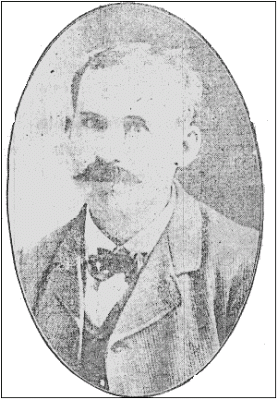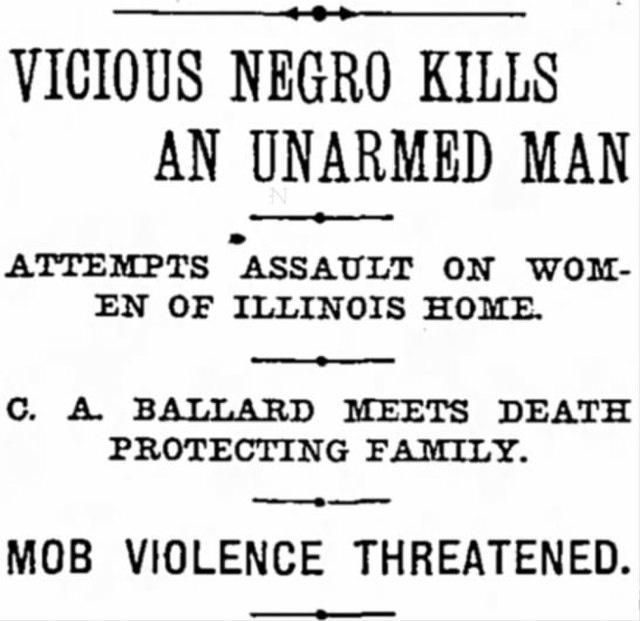Books: In Lincoln's Shadow
The 1908 Race Riot in Springfield, Illinois
Thanks to all my subscribers! If you’re not already a subscriber, consider signing up at the link below.
You can also support Bullfish Hole by leaving a tip in the Tip Jar.
Abraham Lincoln, often lauded as the Great Emancipator, was born in Springfield, Illinois. This was the city’s claim to fame, and something locals took great pride in. In the summer of 1908, the town planned a big celebration for the centennial of Lincoln’s birth the following winter. And all this is why newspaper editors throughout the Jim Crow South were beside themselves with schadenfreude when that summer Springfield erupted in an anti-black race riot.
In her book In Lincoln’s Shadow: The 1908 Race Riot in Springfield, Illinois, historian Roberta Senechal de la Roche examines the riot at the ground level, asking who in the town was most likely to join in the violence and who was most likely to be a target. Her analysis of these patterns draws from sociological theories of conflict, and you can see in it the seeds of her own later theoretical work. A major theme of her analysis is how social distance predicts collective violence, even down to the level of individual attackers and targets. But first she begins with a narrative of the events.
A Drifter and a Murder
The story begins on June 1, 1908, “when the freight train bound northeast for Springfield left the Mississippi River town of Alton, Illinois. Concealed in one of the boxcars was Joe James, a young black drifter from Alabama.” James had long been a drifter, doing odd jobs including playing piano in saloons. Though he lacked a respectable lifestyle, he had no criminal convictions prior to arriving at Springfield.
At Springfield he made his way down to the Levee, the local vice district. Located downtown, this was an area of saloons, cheap rentals, gambling dens, and prostitutes. It was also the area that contained most of the city’s black-owned businesses, including saloons and barber shops.
It made sense that James would go there first, both for whatever action it offered to a young man and as a place to learn about opportunities for work and board. He spent the evening playing pool for money. According to him, he was good at it, and the local black men he played against were mad about losing money. It was they who pointed him out to the some of the city’s police officers as a suspicious stranger, leading to his arrest.
The police — black officers, by the way — ordered him out of town, releasing him from arrest with two hours to clear town. But James refused to be run off, and so was arrested again and taken to jail on a vagrancy charge.
During his month-long stay in jail he was a model prisoner and became a trustee. One day the guards sent him out to buy food, but instead he made the very bad decision to visit the Levee and gamble with the money he’d been given. He won some money and spent the evening drinking and playing the piano. Eventually he got “thoroughly drunk” — he would later claim black-out drunk — and was thrown out of the saloon. He then “stumbled off into the night.”
Clergy Ballard was a white mining engineer. On the same night Joe James stumbled off into the dark, Ballard’s 16-year-old woke daughter up at 1:00am to find a stranger sitting on the foot of her bed. She couldn’t see the person and asked who he or she was but got no answer. Frightened, she cried out for her parents. The intruder fled. Ballard, awakened by his daughter’s cries, came running and chased the intruder as he fled into the front yard. He caught up with him and they struggled. The intruder had a knife and stabbed Ballard to death.
Early the next morning some white girls spotted Joe James sleeping by the side of the road several blocks from the Ballard home in the white working-class neighborhood of North End. Upon hearing the news, Ballard’s sons and neighbors assumed James was the killer. They found him and beat him severely. They probably would have killed him, but the police arrived just in time and took James away.
The murder was front-page news and caused great outrage in the community. It was shocking not just that a black man had allegedly killed a white man, but that it had happened in a respectable neighborhood. If it had happened between two gamblers down in the Levee, that’d be one thing, but this….
It didn’t help that Ballard was well-known and well-liked, drawing many supporters looking to avenge his death. An angry crowd formed at the Ballard household where there was talk of lynching James. But in the end things petered out without violence, and James was left in custody awaiting trial.
And that’s probably where it would have ended, except that a little over a month later, there was another alleged crime to stir up outrage.




